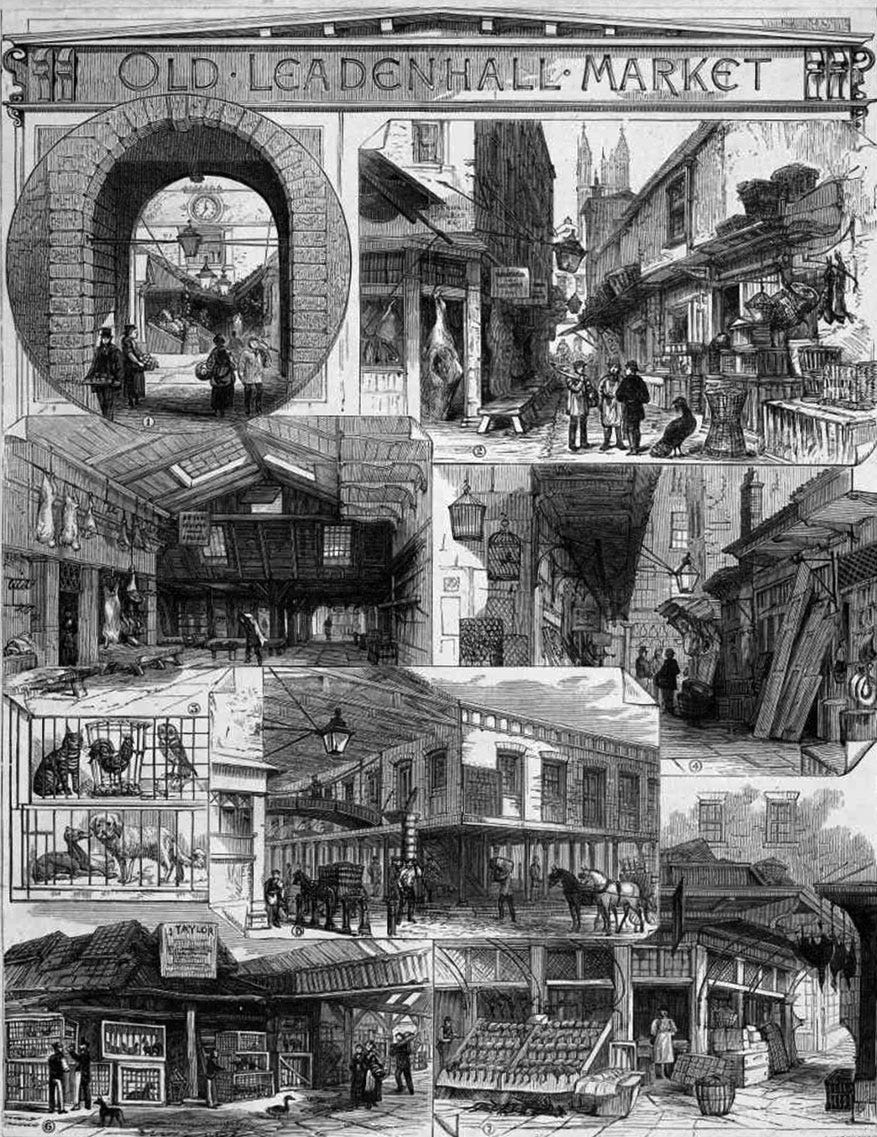Issue 62: the goose that became a poultry market celebrity in 19th Century London
He was a bird who was partial to booze, 'a favourite with all, and the pet of many'.
Leadenhall is one of the oldest and longest-trading market sites in London. Originally a manor house, there are records of a market taking place on the streets outside from the early 14th Century. The house was bought by the City of London in 1411 and rebuilt in the 1440s as a granary and indoor market. Throughout its life it’s hosted the sale of a variety of goods, from cloth and wool, to foodstuffs: meat, poultry, grain, eggs, butter, and cheese.
And it’s here among the poultry stalls that our story begins, in the early 1820s.
Well, actually, it begins in 1797 in Belgium, when a goose egg in the possession of a poultry dealer, Monsieur Botannd, hatched. The goose came to be used as a “decoy”, which meant that it led other geese – “numerous and obsequious flock[s] upwards of ten miles per day” – to ports, from where they would be shipped off for sale elsewhere.
He is said to have “performed the duties of his office with great success”, first under Botannd, and then another poulterer named Blaney, who paid “a large sum” for him.

All was well until, in 1821, “by some accident”, Tom the goose – as he was named – was sent to a Mr Grover, at Leadenhall Market, along with the flock Tom had escorted to Calais.
When the mistake was discovered, frantic letters were sent to London, begging that his life be spared. Thankfully, Tom was easy to pick out of the honking crowd – he answered to his name! Mr Blaney offered to pay for Tom’s upkeep if he was allowed to live, and:
“Tom the Gander then became the patriarch and guardian of all the geese and goslings that came to [Leadenhall] market, and he was never known to let any go astray: he was a favourite with all, and the pet of many.”
Apparently, Tom was also a favourite at the local gin palaces, and partial to “several drams” each day(!), after which he could become a little “disorderly”, but:
“[I]t should be remembered that Tom was only a goose, and could not help himself.”
In the end, it was his partiality for the local drinking establishments, and his curious failure to arrive for his daily “delicious morsel” on 19 March 1835, that caused the alarm to be raised.
Poor Tom was found dead in his nest. He was “upward of” 37 years old.
And how do I know all this? Well, it was documented in the almost-1,000-word obituary for ‘Old Tom’ – titled ‘Funeral Extraordinary’ – which appeared in at least four newspapers, from London to Blackburn, Hull to Bury and Norwich, in the months following his death. It began:
“For the last twelve years he was seen running about, winter and summer, without hat, shoes, or stockings, and wearing the same coat. [… He] lived a useful life, and was much respected by all who knew him. […] By his odd tricks and sagacity, he precured for himself a host of friends, and did much to rescue his order from the stigma of stupidity which has been almost universally cast upon it.”
Old Tom’s funeral took place on 16 April 1835, following a period of “lying-in-state” at his master’s stall in Leadenhall Market, “two of his favourite geese being posted at the door”.
Visitors were charged a penny to pay their respects and the proceeds used to buy the stone which was placed over his grave, dug in the middle of the market. It read:
“This famous Gander, while in stubble,
Fed freely, without care or trouble;
Grew fat with corn and sitting still,
And scarce could cross the barn-door sill;
And seldom waddled forth to cool
His belly in the neighbouring pool.
Transplanted to another scene,
He stalked in state o'er Calais Green,
With full five hundred geese behind,
To his superior care consigned,
Whom readily he would engage
To lead in march ten miles a stage.
Thus a decoy he lived and died –
The chief of geese, the poulterer's pride."
The beautiful wrought iron and glass Leadenhall Market we know today was designed by Sir Horace Jones (also responsible for Tower Bridge) and built in 1881. It was Grade II listed in 1972, and is a popular location for films and television shows (see: Harry Potter). It’s home to boutique retailers, restaurants and cafes, pubs and wine bars – including one called Old Tom’s Bar.
Just around the corner, at 27-35 Poultry, is the old Midland Bank (now home to hotel and private members’ club, The Ned), built in the 1920s by Edwin Lutyens. I cannot confirm this – it’s not mentioned on the websites of The Lutyens Trust or English Heritage (which gave the building Grade I listing in 1972) – but I’ve heard/read it several times that the bird being hugged by a boy on the corners of the building is Old Tom.








